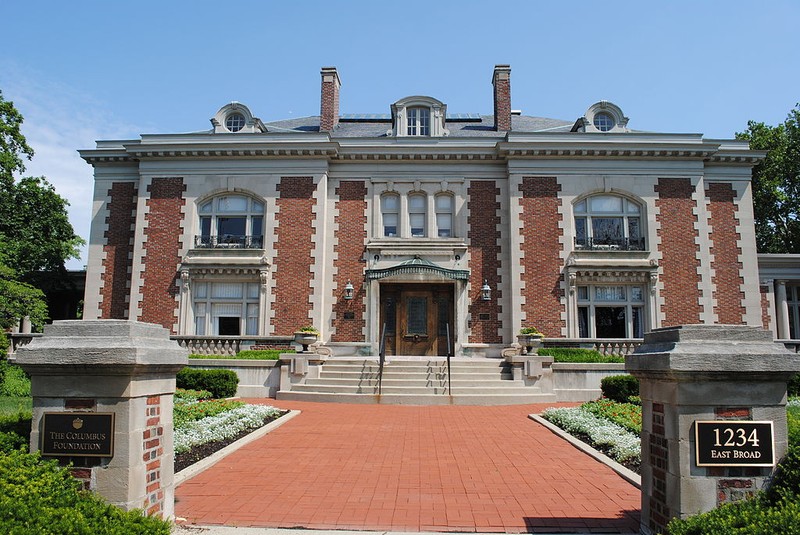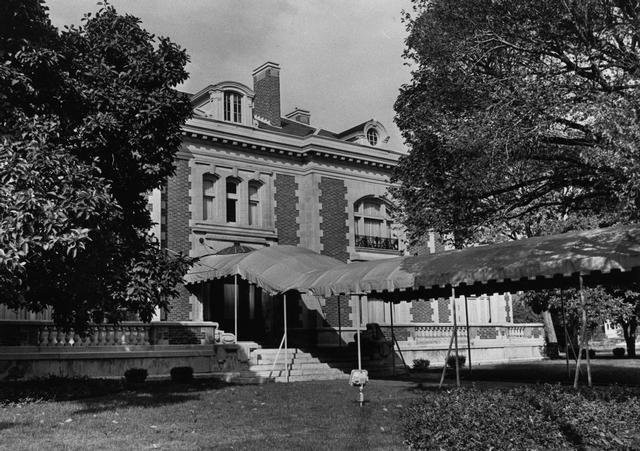Old Governor's Mansion
Introduction
Text-to-speech Audio
Images
The Old Governor's Mansion today

The Mansion Restaurant (1977-1981)

Backstory and Context
Text-to-speech Audio
Before 1917, Ohio’s governors were responsible for finding their own place to stay while in office. Often, this meant moving around from one rented home to another. In 1916, Governor James M. Cox found out that the home on Broad Street he was planning on renting had already been given to another politician. Cox was then forced to live in a hotel room. After the embarrassing incident, the Ohio General Assembly decided to find an Executive Mansion to solve the problem once and for all.
The committee appointed by the assembly chose the Lindenberg Home. Located in a desirable neighborhood, the mansion was built by Charles Lindenberg, a first-generation American who formed part of M.C. Lilley and Company. Lilley and Company made uniforms for colleges, government officers, and fraternal organizations. Thanks to the success of the business, Lindenberg hired renowned architect Frank Packard to design his Neo-Georgian Eclectic style home. The grounds were designed by Frederick Law Olmsted.
Packard made sure to use local materials when possible: the stonework was done with Ohio limestone, the ironwork was painted with Sherwin-Williams paint, and the toilets came from the Columbus Brass Company. Inside, there was a grand stairway and Tiffany glass window to welcome guests. When the Lindenbergs moved into the house in 1904, they added their own touches, such as marble figurines purchased abroad.
Despite the ornateness of the mansion, which included nine bedrooms and a ballroom, the Lindebergs sold it at a loss to the state of Ohio in 1919. The state then began remodeling, adding new furniture and razing the house next door to expand the garden. Finally, in February 1920, Governor Cox and his family moved into their new home. The mansion housed nine more governors by 1957 when the Ohio Governor’s Mansion moved to another house in Bexley.
The Lindenberg Home was then used as the Ohio Archives Building for a short time before passing through several hands in the 1970s. From 1977 to 1981, it served as The Mansion Restaurant. Since 1987, the mansion has been home to the Columbus Foundation, which was founded in 1943.
Sources
COLUMBUS FOUNDATION (OLD GOVERNOR’S MANSION). AIA Columbus. Accessed September 15, 2018. http://archallenge.aiacolumbus.org/project/columbus-foundation-old-governors-mansion/.
Robertson, Karen. The Lindenberg Mansion: A Home Fit for a Governor. Ohio History Central. May 24, 2018. Accessed September 15, 2018. https://www.ohiohistory.org/learn/collections/history/history-blog/2017/june-2018/governorsmansion.
Columbus Restaurant History. Accessed September 15, 2018. http://columbusrestauranthistory.com/Fine_dining/mansion.htm. Information and photo source.
Overview. Columbus Foundation. Accessed September 15, 2018. https://columbusfoundation.org/about-us/overview/.
